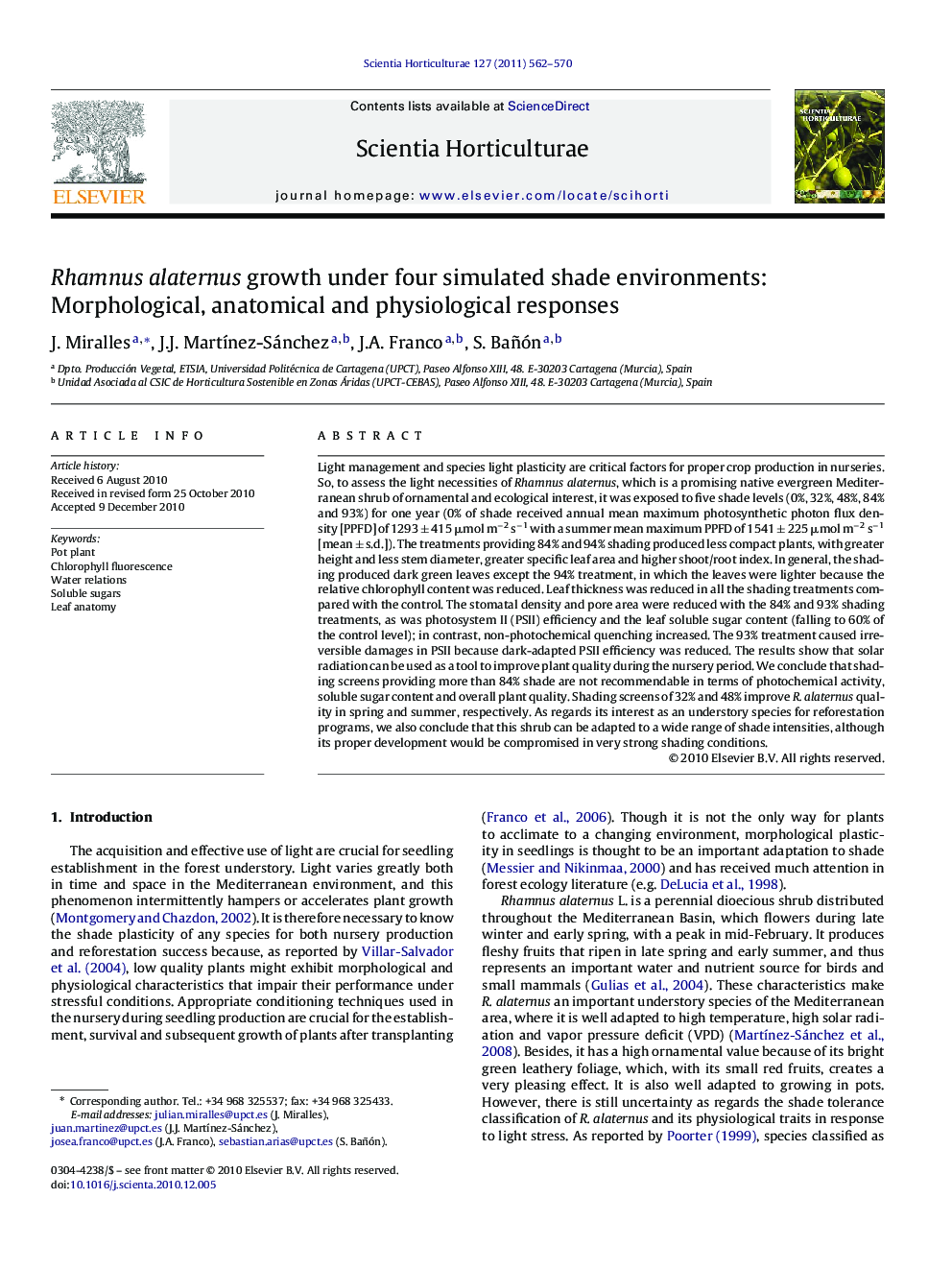| کد مقاله | کد نشریه | سال انتشار | مقاله انگلیسی | نسخه تمام متن |
|---|---|---|---|---|
| 4568388 | 1331297 | 2011 | 9 صفحه PDF | دانلود رایگان |

Light management and species light plasticity are critical factors for proper crop production in nurseries. So, to assess the light necessities of Rhamnus alaternus, which is a promising native evergreen Mediterranean shrub of ornamental and ecological interest, it was exposed to five shade levels (0%, 32%, 48%, 84% and 93%) for one year (0% of shade received annual mean maximum photosynthetic photon flux density [PPFD] of 1293 ± 415 μmol m−2 s−1 with a summer mean maximum PPFD of 1541 ± 225 μmol m−2 s−1 [mean ± s.d.]). The treatments providing 84% and 94% shading produced less compact plants, with greater height and less stem diameter, greater specific leaf area and higher shoot/root index. In general, the shading produced dark green leaves except the 94% treatment, in which the leaves were lighter because the relative chlorophyll content was reduced. Leaf thickness was reduced in all the shading treatments compared with the control. The stomatal density and pore area were reduced with the 84% and 93% shading treatments, as was photosystem II (PSII) efficiency and the leaf soluble sugar content (falling to 60% of the control level); in contrast, non-photochemical quenching increased. The 93% treatment caused irreversible damages in PSII because dark-adapted PSII efficiency was reduced. The results show that solar radiation can be used as a tool to improve plant quality during the nursery period. We conclude that shading screens providing more than 84% shade are not recommendable in terms of photochemical activity, soluble sugar content and overall plant quality. Shading screens of 32% and 48% improve R. alaternus quality in spring and summer, respectively. As regards its interest as an understory species for reforestation programs, we also conclude that this shrub can be adapted to a wide range of shade intensities, although its proper development would be compromised in very strong shading conditions.
Research highlights▶ Rhamnus alaternus develops adaptation mechanisms to shading. ▶ Shading ≥84% affects R. alaternus quality. ▶ 93% of shading damages the photosynthetic apparatus. ▶ 32% and 48% of shading improve R. alaternus quality in spring and summer, respectively.
Journal: Scientia Horticulturae - Volume 127, Issue 4, 10 February 2011, Pages 562–570